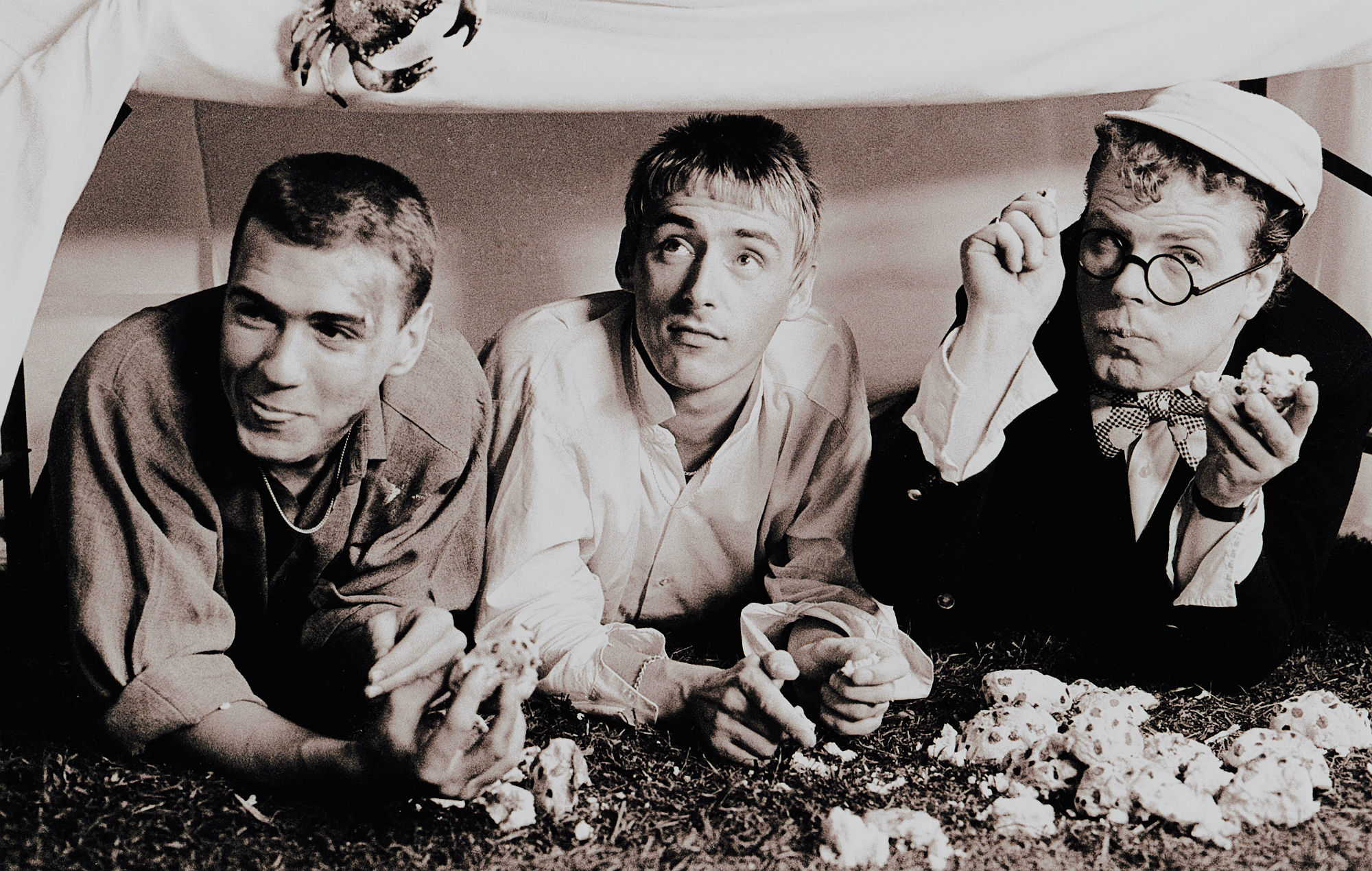
Steve White looks back on the legacy of The Style Council – and having a brother in Oasis
As The Style Council release a new greatest hits album ‘Long Hot Summers: The Story Of The Style Council’, alongside a Sky Arts documentary on the band, drummer Steve White is in reflective mood. There’s a colourful history to look back on.
Co-compiled by Paul Weller, the album and film look back to one of the most daring moves of the post-punk era, when Weller controversially split The Jam at the age of just 24 and formed a soul-pop band alongside Mick Talbot of Dexy’s Midnight Runners in 1983 – inspired by Blue Note jazz, northern soul, Latin grooves and Gallic pop. The band, completed by drummer Steve White and singer Dee C. Lee, went on to make six albums in the 1980s and have numerous hits including ‘Walls Come Tumbling Down!’, ‘My Ever Changing Moods’, ‘You’re The Best Thing’ and others, all gathered onto this 37-track album.
“I see Mick quite a bit and I see Paul quite a bit, I see Dee,” White tells NME. “Not so much recently for obvious reasons but we’re all still very much in touch for various things. Mick’s been playing on some of Paul’s stuff and before lockdown we had a lovely Sunday lunch with Dee, so we’re all still mates. Paul and Dee have a relationship because they have children so they’re in touch all the time and Mick lives literally five minutes from me. We’ve kind of remained friends over the years, which is lovely.”
NME caught up with White to talk about Weller’s boldest move, its legendary punting aesthetic, its forthright politics and its brotherly link to Oasis…
Hello Steve. How do you feel about The Style Council now?
Steve: “The thing that struck me listening back to the record was how many diverse influences there were on that first album especially. It reminded me a lot of the music we were listening to, in things like ‘Dropping Bombs On The White House’, which was our attempt at doing a swing tune. We felt that the modern jazz quartet combined classical music and swing and we kind of combined pop music and swing.”
So your first album still feels unusual?
“We weren’t standing up as jazzers but the influences were really quite diverse. I remember there was a rap track with a guy called Dizzy Heights and the drum parts and the fills are really influenced by the go-go music of the time, Chuck Brown And The Soulsearchers and The Junkyard Gang. I can really hear that coming out, so from Latin and bossa nova to swing and a London attempt at a go-go influence with a rapper, and one of the best songs I think Paul’s ever written, ‘Headstart To Happiness’, all on one record. It’s so experimental and brave, considering not just the diversity of the record but the age that we all were. I was 18 and Paul was 25 and already had The Jam under his belt, it’s quite incredible really.”
It was a big shift for Weller at the time, but it’s been embedded into his music ever since.
“The influences you can hear in The Style Council have probably endured in Paul’s music over the years maybe more than The Jam have. The soulful element was what The Style Council really brought out in Paul, not that The Jam weren’t a soulful band, but that’s the thing that has remained quite constant. Even though Paul has changed over the years there has been that soulful element ever since.”
How did The Jam fans take to the new direction?
“The fans were not happy, and there are fans that are still not happy now about that decision 40 odd years later. Commercially it was incredibly bold, artistically I don’t think it’s anything that people who have followed Paul’s career would be surprised at. I don’t think he’s ever changed on that front. If he feels it’s time to change and do something different, he does it. There aren’t many artists that have the faith in themselves to walk away from something as successful as The Jam, but his career speaks for itself. 40 odd years later he’s still making records that are going to number one.”

What’s his take on the band now?
“I don’t think his feelings have ever changed. It was something he was incredibly proud of and he’s always said he had a lot of fun in that band. Having watched the documentary and listened to the music, it’s quite tangible, the joy. Coming out of the pressure cooker of being the lead singer of such an amazing and influential band, going off to Europe where that band wasn’t as well-known with a group that was half boys, half girls on a coach, it was a little bit like a magical mystery tour playing to audiences that were much, much smaller than he’d been used to. It was a shock for all of us but very enjoyable.”
This was a period when mainstream acts could be political, and The Style Council became involved with Red Wedge [Left-leaning, Billy Bragg-led musical collective]. How was that?
“I found a real political home. I was already a member of CND so the politics that we shared were very similar. We were quite active politically in those early years and it wasn’t too bad, the record company weren’t that impressed by it but they never tried to stop us doing stuff. Eventually, when the Red Wedge thing came about and our involvement with the miner’s strike, it maybe started to take over the agenda a little bit – more than the music in some ways.
“At the time, on Red Wedge, people like Gary Kemp from Spandau Ballet came and played at the same concert as The Smiths at Newcastle City Hall and when we did a benefit for the GLC, George Michael came along. These are huge stars at the time, if you imagine the equivalent now, the flack that they would get for supporting something vaguely socialist would be almost career-ending. Artists delve into politics and comment at their peril these days.”
How do you remember Live Aid?
“It was an amazing experience. A lot of people have a lot to say about Live Aid after the event about whether it did any good or whatever, but everything that was done about Live Aid to set it up – from Geldof and Midge Ure and Harvey Goldsmith – was all done with the best intentions. I certainly saw it as a magical day. We had to go and do a TV show after our performance and we had the option to come back to Wembley with our passes. We made the decision to go back and so I got to see from about 4 o’clock, pretty much everything from the side of the stage. The one thing I do regret is not going up to say hello to David Bowie, but I didn’t want to disturb him while he was having a fag backstage.”
Having been through that kind of whirlwind at a young age, how did you feel when your brother Alan joined Oasis as drummer?
“Oasis was a different level of shitstorm in terms of media and exposure. Once he joined the band, which was very quick, I didn’t properly see him for a year, so it’s testament to his character that he dived straight into it and was able to bring his thing to that band so quickly without losing the plot. A lot of drummers may have found it a bit overwhelming. We had the Daily Mirror phoning my parents’ house for quotes. Because I’d been in a band before, although not to that extent of fame, I was able to be a bit of a calming influence.
“I think he had a wonderful time when he first joined the band. There was some massive kick off at the end of [recording ‘(What’s The Story) Morning Glory’] and Alan came back saying ‘I think the band’s split up’ and I said ‘well having looked at a bit of history of the band, just wait a few days and see what happens!’ It was an incredible rollercoaster…once it came out it just went mental. When you’re starting to see your brother turn up on the national news in some sort of battle with Blur, you think ‘bloody hell, this is a bit crazy’.”
‘Long Hot Summers: The Story of The Style Council’ is out now. The documentary of the same name airs on Sky Arts at 9pm on Saturday October 31.

![Music Remover from Video in 2025 [Top 6 Review]](https://edmislife.com/wp-content/uploads/2025/07/unnamed-29-png.webp)
